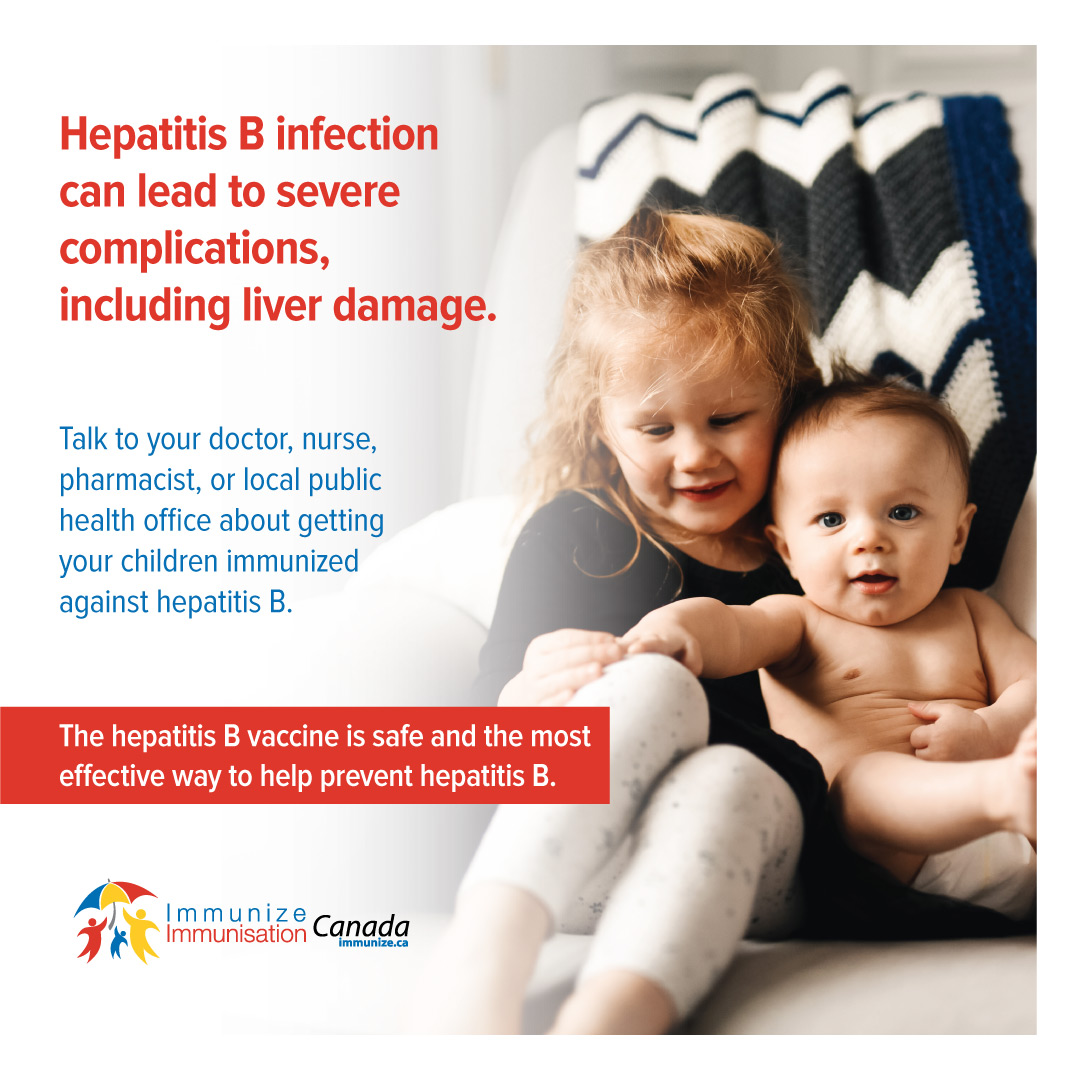Hepatitis B
The hepatitis B virus causes hepatitis B, and the virus lives in the blood and some bodily fluids of infected persons (e.g., semen and vaginal fluid). Hepatitis B can start as an acute infection and then become chronic. Cases of hepatitis B have declined in Canada due to the success of immunization programs. However, hepatitis B infections are still common worldwide. Hepatitis B virus spreads from person to person. Transmission occurs when an infected person’s blood or bodily fluids enter another person. This can happen through sharing needles, having sex (especially if unprotected), sharing razors or toothbrushes if they are contaminated with blood, and in other ways. Pregnant persons who have hepatitis B can also pass the virus to their newborn during childbirth. While anyone can catch hepatitis B, there are certain factors that put people more at risk for experiencing severe infection. In general, the risk for severe infection increases with age. Other people more at risk for severe infection include anyone who has a liver disorder, or who is pregnant (the risk of liver failure and death is higher in pregnancy).
Note: Hepatitis is a term that means inflammation of the liver. There are five main type of hepatitis viruses that cause hepatitis, known as types A, B, C, D, and E. Only hepatitis A and hepatitis B can be prevented by vaccination.
Check out our resources on hepatitis B immunization and share with your network!
Campaigns and Awareness Materials

For the Public
For Healthcare Professionals
Pocket Guide for Immunizers
NACI Statements
Campaigns and Awareness Materials
Social media images
Hepatitis B infection can lead to severe complications in children
(social media image 1 for Twitter/Facebook: 285 KB)
Hepatitis B infection can lead to severe complications in children
(social media image 1 for Instagram: 249 KB)
Hepatitis B infection can lead to severe complications in children
(social media image 2 for Instagram: 303 KB)
Hepatitis B infection can lead to severe complications in adults
(social media image 1 for Twitter/Facebook: 350 KB)
Hepatitis B infection can lead to severe complications in adults
(social media image 2 for Twitter/Facebook: 348 KB)
Hepatitis B infection can lead to severe complications in adults
(social media image 2 for Instagram: 341 KB)
Video
Dr. Vivien Brown: Hepatitis immunizations for your vacation










